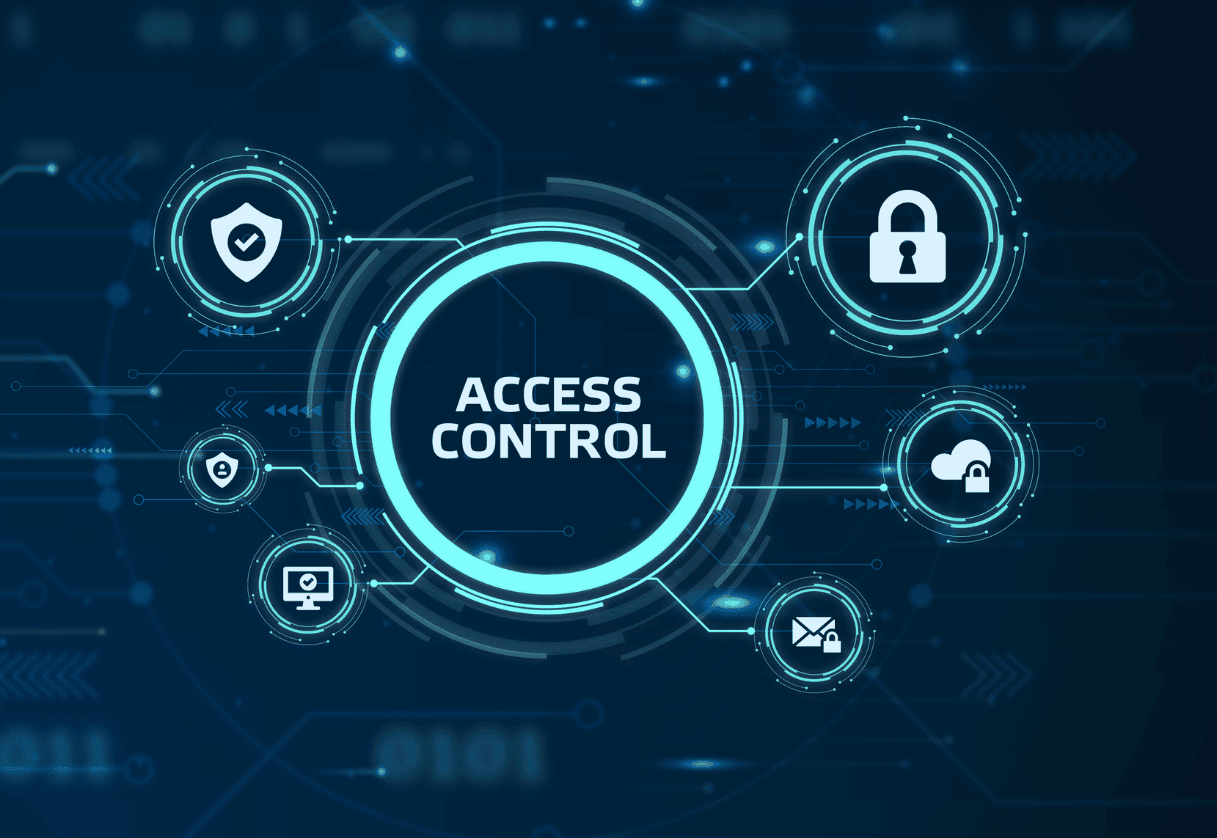The implementation and management of smart access control come with their own set of challenges. This includes issues related to privacy, data protection, and system interoperability. Despite these hurdles, it is undeniable that smart access control holds immense potential in creating safer environments.
This article delves into the key features of smart access control systems, the benefits they bring about by integrating advanced technologies, the challenges faced in modern access management, along with plausible solutions, as well as best practices for implementing these intelligent security systems.
Key Features of Smart Access Control
Among the critical characteristics of smart access control are enhanced security provisions, customizable access levels, real-time monitoring capabilities, and seamless integration with existing security systems.
Enhanced security features can include biometric identification methods such as fingerprint or facial recognition, which offer a higher level of security than traditional key-based systems. Customizable access levels allow administrators to define who has access to specific areas at particular times. This feature is invaluable in large organizations where different individuals need varying degrees of accessibility.
Real-time monitoring is another significant aspect of smart access control. It provides immediate updates on any attempts to gain unauthorized entry into restricted areas. Alerts can be sent directly to designated personnel like a security officer or system administrator once an anomaly is detected in the system’s regular operation pattern. This capability ensures prompt response and action against potential threats or breaches.
The ability of smart access control systems to integrate seamlessly with existing security infrastructure is paramount for maximum efficacy and efficiency. These systems should work harmoniously with other elements like video surveillance equipment, alarm systems, and intrusion detection devices without causing any conflicts or disruptions in functionality.
Additionally, they should also be capable of future expansions and upgrades without necessitating massive overhauls or replacements—thereby ensuring that these solutions remain cost-effective over time while still meeting evolving safety requirements.
Benefits of Integrating Advanced Technologies
Incorporating advanced systems into existing infrastructures can significantly enhance operational efficiency and safeguard sensitive data. The integration of smart access control with advanced technologies has paved the way for a more robust, flexible, and secure method of managing entry points in various establishments.
This advancement is particularly relevant in today’s digital age, where cyber threats are prevalent and sophisticated methods are required to counteract such risks.
By utilizing innovative technology such as biometrics, RFID, mobile credentials, or even artificial intelligence, businesses can further fortify their premises against potential breaches while also streamlining their administrative processes through automated functions provided by these systems. The integration of advanced technologies with smart access controls brings substantial benefits that contribute towards a more secure and efficient organizational environment.
Challenges and Solutions in Modern Access Management
Despite the numerous benefits, contemporary systems for managing entry points present certain challenges that require innovative and strategic solutions. One recurrent issue is related to the complexity of managing multiple access points across different locations.
This often requires a centralized management system which can be complicated due to the need for compatibility with various hardware and software configurations. Additionally, as these modern access control systems are closely linked with technology, they become susceptible to cyber threats. The risks associated with data breaches or hacking attacks can lead to unauthorized access and compromise overall security.
To tackle these challenges, there is an increasing focus on developing scalable and flexible solutions. For instance, cloud-based access control systems provide possibilities for remote management of entry points regardless of geographical location or number of endpoints involved.
Such systems also offer real-time updates about any abnormal activities or potential intrusions into the premises, ensuring enhanced vigilance over security matters. Furthermore, adopting advanced encryption techniques along with regular software updates has proven successful in mitigating cyber threats.
While addressing these issues requires ongoing efforts from both manufacturers and end users alike, it is important to note that no solution can be deemed foolproof against all potential risks associated with digital access controls. It becomes paramount to conduct regular risk assessments and update protocols based on current best practices in cybersecurity.
Businesses should invest in training staff members on how best to utilize these technologies while maintaining optimal security standards at all times because even the most sophisticated system can be rendered ineffective by human error or negligence.
Best Practices for Implementing Smart Security Systems
With an emphasis on comprehensive training, regular system updates, and ongoing risk assessments, these elements play a pivotal role in ensuring that organizations not only stay ahead with the latest advancements but also manage potential risks effectively. Integrate these practices into an organization’s overall security strategy to leverage their full potential.
- Comprehensive Training: It is crucial that all staff members understand how to use the new technology appropriately. This includes understanding its functions and limitations as well as knowing what actions they should take in case of a breach or malfunction.
- Regular System Updates: Technology evolves at an unprecedented pace; hence, it is essential for organizations to regularly update their smart security systems to ensure they can combat emerging threats effectively.
- Ongoing Risk Assessments: Regular risk assessments help identify vulnerabilities in the system and provide insights into areas that require improvement or additional safeguards.
- Integration with Overall Security Strategy: To achieve optimal results from smart access control systems, it is vital that they are seamlessly integrated within an organization’s broader security framework.
The successful execution of these steps requires meticulous planning and rigorous attention to detail at every phase – from selection and installation through to maintenance and upgrades of smart security systems. It implies a commitment not just towards procuring state-of-the-art equipment but also fostering a culture where safety is given paramount importance, supported by continuous learning and adaptation according to evolving technological trends and threat landscapes.
While investing in sophisticated tools forms one aspect of enhancing access control mechanisms within organizations, equally important are effective training programs for users along with robust measures for prevention, detection, and response strategies that align closely with broader organizational objectives related to safety and data protection.
In today’s rapidly advancing technological landscape, smart access control systems have become essential for enhancing security and managing access efficiently. By integrating cutting-edge technology, these systems provide robust security solutions for residential, commercial, and industrial properties. Here are some top products to consider when upgrading your access control system.
Choosing the Right Access Control System
Cellgate: Watchman W410
The Watchman W410 from Cellgate offers seamless smart gate access control with real-time alerts and remote management. Enhance security and convenience with this cutting-edge solution that integrates easily into your existing system.
Key Features:
- Seamless smart gate access control
- Real-time alerts and notifications
- Remote management via mobile app
- Easy integration with existing systems
- Enhanced security with user-friendly interface
Liftmaster: CAPXLV
Liftmaster’s CAPXLV provides advanced, cloud-based smart access control for commercial and residential properties. Enjoy reliable, remote management and enhanced security with this user-friendly, high-tech system.
Key Features:
- Cloud-based smart access control
- Remote management for commercial and residential properties
- Reliable and secure operation
- User-friendly interface with advanced features
- Integration with various access systems
FAAC: Easypass 100
The Easypass 100 by FAAC delivers a robust, integrated access control system that combines ease of use with high security. Perfect for managing access in various environments, it offers reliable performance and flexibility.
Key Features:
- Integrated access control system
- High security with user-friendly operation
- Flexible for various environments
- Reliable performance
- Easy management and configuration
Choosing the Right Smart Access Control System
When selecting a smart access control system, consider factors such as the size of your property, the level of security required, integration capabilities, and ease of use. The products listed above offer a range of features to meet different security needs, ensuring that you can find the perfect solution for your specific requirements.
For personalized recommendations and to explore more options, contact R3 Access at 215-364-5868 or visit our website at r3accessinc.com. Our experts can help you find the ideal smart access control system to enhance the security and functionality of your property.
Follow us on linkedin


